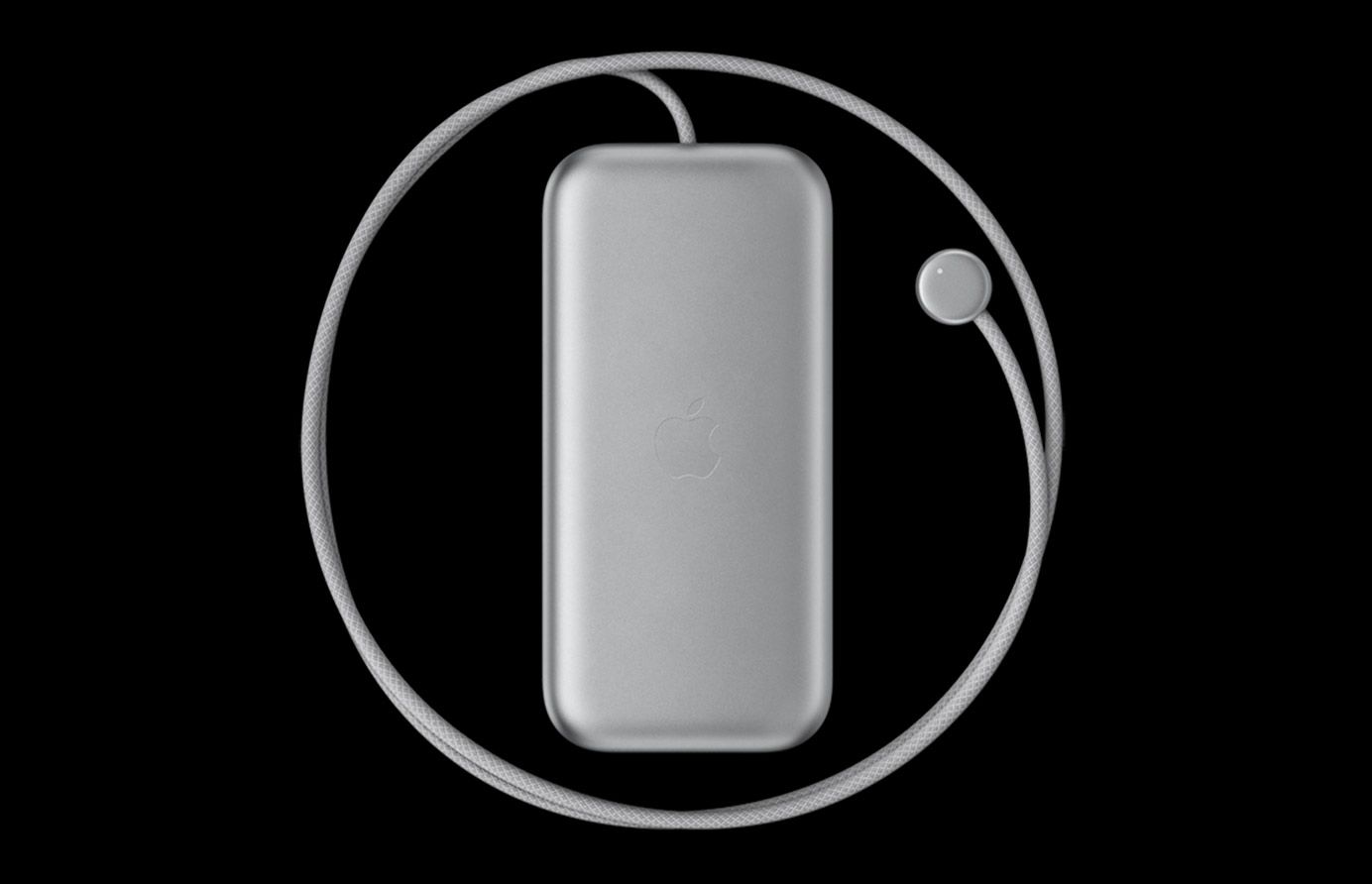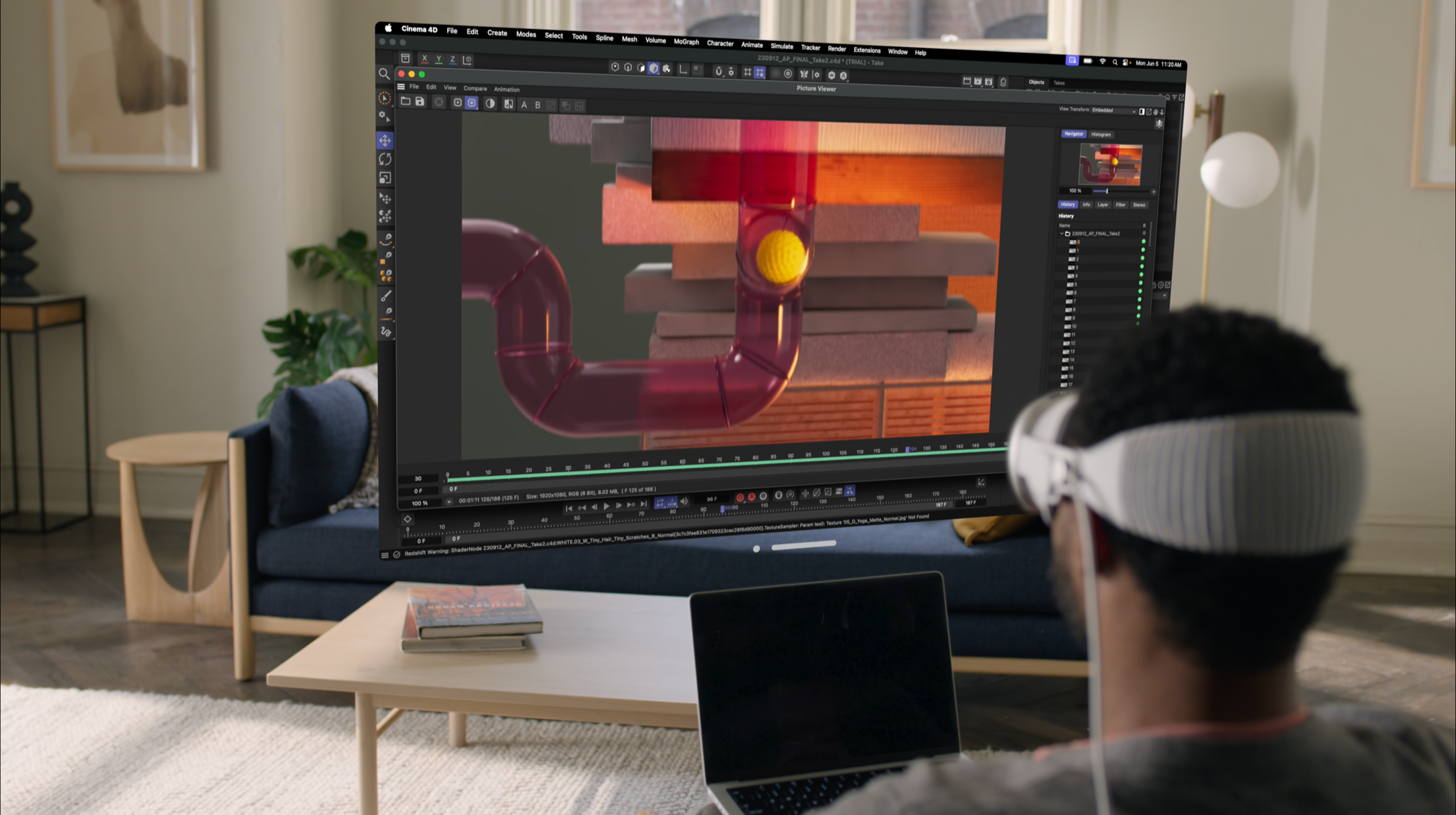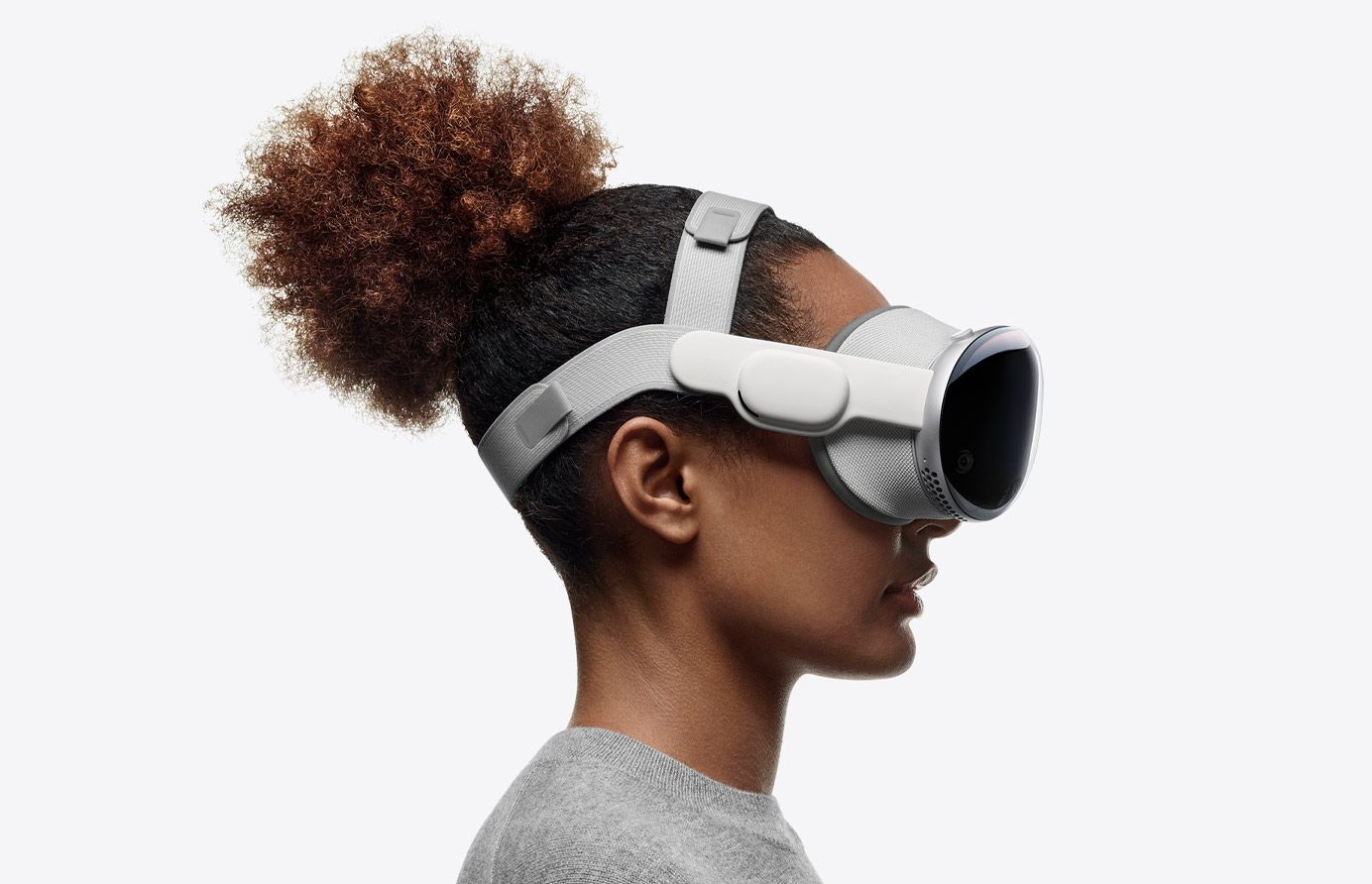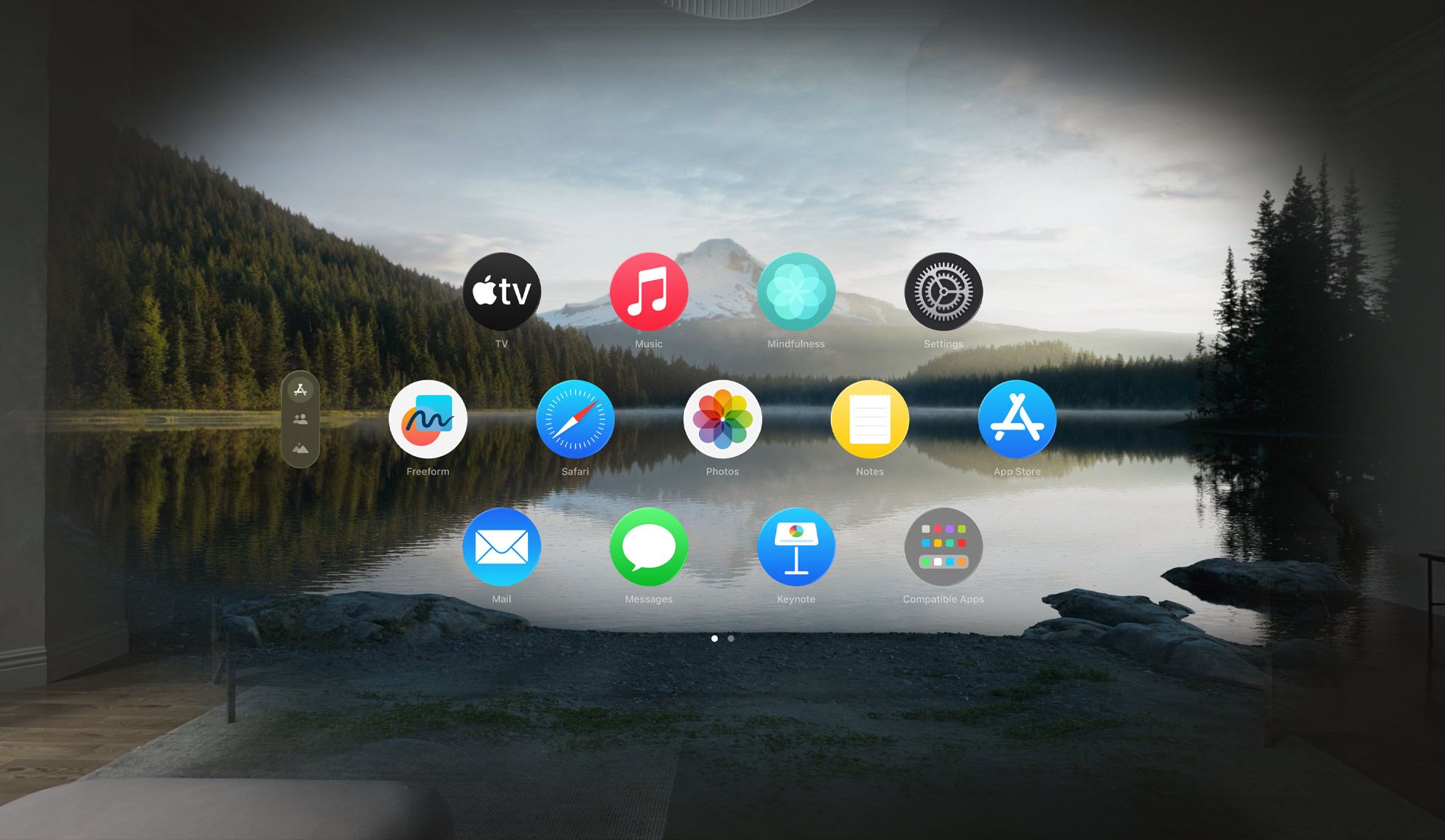
Exploring the Downsides: Key Issues with Apple Vision Pro to Consider Before Investing

Exploring the Downsides: Key Issues with Apple Vision Pro to Consider Before Investing
Quick Links
- The Limited Battery Life
- No Multiple Virtual Monitor Setups for Mac Users
- You Might Need Prescription Lenses
- The Weight May Limit Your Usage
- The App Ecosystem Is in Its Infancy
- It’s a First-Generation Product
Apple’s first shot at a mixed-reality headset is exciting, but don’t be blinded by the hype. Here are some potential deal-breakers that might make you think twice about dropping so much money on the Vision Pro.
The Limited Battery Life
The Apple Vision Pro comes with a detachable battery pack that you can slip into your pocket or attach to your waist, reducing the headset’s overall weight. This provides enough juice for two hours of general use or two and a half hours of video, according to Apple’s numbers. That’s not enough to watch The Lord of the Rings theatrical releases, let alone the extended cuts.

Apple
In reality, this will only be an issue when you’re away from a power outlet. You can charge and play using the included 30W USB-C adapter, though you might want to invest in a longer 10ft (3 meter) cable since Apple only supplies a 5ft (1.5 meter) cable in the box.
If you were hoping to use your Vision Pro to watch movies or get work done while on a flight (as per Apple’s marketing for the headset), you’d better hope you have a power outlet under your seat. Extra Vision Pro batteries are available, but they’ll run you $199 apiece.
Making matters worse, you can’t hot swap between batteries even if you have several of them, meaning you’ll need to power the Vision Pro off and on every time you change power packs.
No Multiple Virtual Monitor Setups for Mac Users
Hoping to replace your existing Mac setup with a Vision Pro? We’ve got some bad news. Apple’s first-generation headset is only capable of mirroring your existing Mac display at a 4K resolution. That means no virtual multiple monitor setup, which feels like a missed opportunity.
This is because of bandwidth limitations, since the Vision Pro relies on AirPlay 2 to bridge the gap between your computer and the headset. There’s simply not enough bandwidth to display more than one screen at a time or exceed resolutions of 4K.

Apple
Perhaps in future revisions this is something Apple will overcome. It seems like the perfect use case for a mixed reality headset, and being able to replace or expand an existing setup could help justify the steep $3,499 price tag. Imagine turning a humble MacBook into a triple-monitor productivity station without sacrificing any real-world space.
It’s worth noting that the headset has its own operating system, so dedicated Vision Pro pioneers can probably work around this limitation. Keep your virtual display for Mac apps that don’t exist elsewhere, then use visionOS for Safari, Notes, and similar apps.
You Might Need Prescription Lenses
Less of a deal-breaker and more of an added expense, the Apple Vision Pro won’t work with glasses or hard contact lenses (single-use, soft contact lenses are fine). Reflections from these corrective aids prevent the Vision Pro’s pupil detection feature from working correctly, which is how you navigate the interface.
The good news is that Apple sells prescription ZEISS lenses that will allow you to use the Vision Pro without your glasses. For wearers of hard contacts, that means having to remove your contact lenses every time you want to use the Vision Pro.
The cost for “distance” lenses is $149, while “reading” lenses that allow you to see things up close cost $99. You won’t be able to buy these from an Apple retail location; you’ll have to order them from Apple’s website. If your prescription changes, you’ll need to order a new pair of lenses.
The Weight May Limit Your Usage
One of the big talking points among those who were given early access to the Vision Pro was the weight of the unit. It’s a hefty chunk of aluminum and glass that you wear on your face. It’s a good job Apple opted for a separate battery pack.
According to Apple’s tech specs, the Vision Pro weighs 21.2 to 22.9oz (600–650g). Most of the weight is on the front of your face, a sensation you’ll likely be familiar with if you’ve used any of the chunkier VR headsets like the Oculus Rift or Valve Index.

Apple
Many of the most talked-about developments in the VR space have been from small and lightweight headsets like the HTC Vive Flow and Bigscreen Beyond . Apple’s wireless and controller-less design means that the Vision Pro is a self-contained unit, with all the necessary sensors and hardware on board. Unfortunately, all of that kit adds to the weight.
You might find that you are only comfortable using the headset for an hour at a time, rather than wearing it as an all-day office productivity tool. There’s also a chance that you’ll just get used to it over time. The best way to make an educated decision is to try before you buy by booking a demo at an Apple retail location near you.
The App Ecosystem Is in Its Infancy
The Vision Pro isn’t an iPhone, or an iPad, or a Mac. It’s a completely new “spatial computing” platform that runs its own operating system called visionOS. Because it’s new, there’s going to be a “breaking in” period for software. Though Apple mainstays like Safari, Notes, Photos, and others will be there, robust third-party support will take time.

Apple
Apple understands this, hence the abnormally long build-up to launch compared with the company’s other products. In fact, Apple seems so unconcerned with people adding multiple to the Vision Pro at launch that it doesn’t even allow you to rearrange apps on the home screen, limiting them to alphabetical order.
Despite the company’s best efforts to court developers, the Vision Pro is a niche product. Many app developers simply won’t see the value in developing for the platform initially, given its relatively small user base.
We’ve seen this play out before with platforms like the Apple Watch , a wearable that costs around 10% of what Apple is asking for the Vision Pro. Many developers have yet to develop for the Apple Watch, despite its relatively low barrier to entry and undeniably utility. Now imagine what that means for a mixed-reality headset that costs more than a MacBook.
It’s a First-Generation Product
The fact that the Vision Pro is a first-generation product shouldn’t hold you back if you’re living on the bleeding edge. This is especially true if you’re fond of upgrading every year, selling on your old models, and staying one step ahead of the curve. But most people reading this won’t fall into that camp.
Most of us buy products as we need them, keep them until they break or feel significantly outdated, and then make considered decisions to replace them. The problem with buying a first-generation anything is that you’re stuck with the first-generation problems that appear once the device is put to the test in real-world situations.
The first generation Apple Watch was bold but flawed and saw an almost complete redesign a few generations later. Even major redesigns of existing products aren’t necessarily slam-dunks. The 2016 MacBook Pro was plagued with keyboard issues, and the utility of the Touch Bar was arguably better on paper than it was in reality.
If you’re interested in the Vision Pro but aren’t positively buzzing with excitement, you’re probably a good candidate for the next model. If any of the other issues on this list sound like they’d bug you, we suggest you wait until Apple irons them out. It might make sense to buy a lighter headset with better virtual display support that has more apps to choose from in two or three years.
It’s an exciting time for modern computing, particularly with the launch of something as unique and promising as the Vision Pro. Apple rarely launches entirely new platforms, and the push demonstrates just how invested the company is in the idea of “spatial computing.”
Just make sure you’re asking the right questions before you jump into a very expensive purchase. You might get more out of a brand-new MacBook for less money, after all.
Also read:
- [New] Beating the Curve Adapting to New Facebook Content Rules for 2024
- [New] Exploring Shades Insights From the Best 11 Color Guides
- [New] Golden Age of Scenario Writing in Motion Pictures
- [New] Ice & Velocity Memorable Moments From the Winter Olympics Snowboard Race
- [Updated] Innovation at Hand Creating 3D Textures with PHOTO
- 2024 Approved High-Fidelity Graphics on 4K An In-Depth Look at ProArt Monitors
- Affordable iPhone Experience Awaits: Discover the iPhone 14 Plus with Exceptional Battery Life and More - Insights by ZDNet
- CatchEmAll Celebrate National Pokémon Day with Virtual Location On Samsung Galaxy S24+ | Dr.fone
- Expert Insights on PowerDirector '24 Review for 2024
- How to Reset a Vivo Y100A Phone That Is Locked | Dr.fone
- In 2024, Clever Circumventions for Edgenuity Video Course Skipping
- In 2024, Exploring Samsung's Photography Toolkit
- In 2024, How To Change Honor Play 40C Lock Screen Clock in Seconds
- In 2024, Ideal Devices and Programs Photos to Movies
- Perfect Pairings The Science of Matching Music with Imagery for 2024
- Step-by-Step Strategies for Implementing HDR in Windows 11
- YouTube Collabs How to Find YouTube Collaboration Partners for 2024
- Title: Exploring the Downsides: Key Issues with Apple Vision Pro to Consider Before Investing
- Author: Frank
- Created at : 2025-02-14 17:02:12
- Updated at : 2025-02-19 20:29:36
- Link: https://some-techniques.techidaily.com/exploring-the-downsides-key-issues-with-apple-vision-pro-to-consider-before-investing/
- License: This work is licensed under CC BY-NC-SA 4.0.